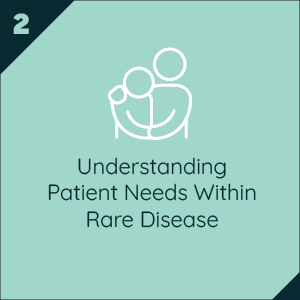
Part Two – Understanding Patient Needs Within Rare Disease
The majority of us work in the pharmaceutical industry to help patients get the most out of their therapies. In my experience, this motivation is critical for working within the rare disease space—a therapeutic area in which patients have often had to deal with their disease for many years without the support of approved therapies. Their ability to cope and maintain a positive attitude is a testament to their fortitude.
There are many opportunities to engage these patients: you can hold ad boards, attend patient disease conferences, invite patients into your headquarters for a discussion, and you can identify patient advisors on an ongoing basis. The key to success in any of these engagements is to be sincere in your objectives.
Patients and their caregivers can provide a wealth of information. In my career, I have had the most success engaging patients through patient advisory boards and at conferences.
To conduct patient advisory boards, we worked with a rotating group of patients on a bi-annual basis. This helped us maintain consistency as well as introduce new members to the team. We always started by creating a detailed agenda for the meeting and providing pre-meeting assignments. We also polled the attendees for topics that were most important to them. We found these discussions to be extremely beneficial in helping us shape future strategy as well as ongoing initiatives.
To me, the most important aspect of these interactions is to show you are willing to listen and act on the recommendations attendees provide. We were always careful not to overpromise, but we also were able to demonstrate tangible changes to our approach based on their direct feedback. It is important for the advisors to know that they have been heard.
While patient advisory boards allow you to engage with a limited number of people in a controlled setting, conferences provide an opportunity to interact with a broader segment of the population and to hear from many. As you can imagine, this can be a little overwhelming, depending on the disease. When engaging patients at conferences, follow-up is paramount to success. I was always mindful to capture the names of the people I spoke to so that I could follow up when we implemented their idea or augmented our approach based on their input.
Patients can provide valuable information to help inform brand marketing. The success of these endeavors is driven by the ability to listen, synthesize, and follow-up. Done correctly, these relationships can last for years.
-Emil Andrusko, Managing Director | Principal
Next week: Cultivating relationships